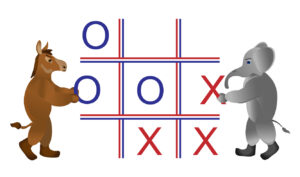Bridging the deskless divide with personal connections
Andres “Dre” Muñiz of Eli Lilly explains why comms leads should get to know employees in person.

 Forever a pain point with communications professionals, keeping deskless workers informed and connected with their employers requires the right blend of channels, tools, tactics and culture building.
Forever a pain point with communications professionals, keeping deskless workers informed and connected with their employers requires the right blend of channels, tools, tactics and culture building.
But a little moxie doesn’t hurt either.
At Ragan’s upcoming Future of Communications Conference during Comms Week, Andres “Dre” Muñiz, Associate Director of Communications for Global Manufacturing and Quality at Eli Lilly and Company, will share his strategies for effectively reaching deskless workers — a segment that’s often challenging to connect with due to their varied schedules and on-the-ground responsibilities.
Muñiz sat down with Ragan to deliver a preview of his best tips for keeping frontline employees engaged and informed.
First-hand perspectives
To determine the best comms channels for each role, Muñiz puts himself into deskless workers’ shoes. Important questions to consider include:
- How and when will employees on different shifts see digital signage?
- When do they check their email?
- When do they talk to their managers?
- When do managers have the opportunity to check emails and absorb new messaging?
Those moments become your targets for deploying essential communications.
“As soon as they walk into the facility, they see the signage, or during their break, even as they leave their shift,” Muñiz said. “Right before they get on shift, there is a stand-up meeting with their supervisor, and when they log on to their device, they have the email in their inbox. It’s a multi-front approach with a purpose.”
Getting to know employees personally can certainly help to firm up your perception of those touchpoints. In-person relationships are the quickest route to earning someone’s attention and time of day — and ultimately turning them into advocates who can help cascade important messages to their peers.
“I’m a people person, and meeting new people fuels me,” said Muñiz. Every time he visits a manufacturing site or quality lab, he makes it a point to connect with both familiar and new faces.
In every site visit, he tries to leave with three things:
- “A new colleague who’s a business area subject matter expert that I can lean on.”
- “A great human story to tell in future content.”
- “An established base of trust with my audience, who can potentially become communications advocates to their peers.”
Similarly, measurement comes down to listening for Muñiz as well. “Direct feedback from the population is how I can tell these channels are working,” he said.
Storytelling for managers
Then again, not every crane operator or pharmacist wants to cozy up with the comms lead. That’s why starting with managers is a must.
“That immediate team leader is the face of the company to that employee,” Muñiz explained. These managers are not only the primary point of contact for information but also the ones who coach workers through challenges and offer guidance for professional development.”
Team leaders shape the employee experience. They are in a better position to earn trust and loyalty than anyone else in a given organization because their relationship inherently relies upon trust.
If communication doesn’t come easily to a manager, they may need more than just information and updates from the pros to translate to their teams. They may need help telling a story.
“One thing that I have found to be powerful is leaders sharing their personal ‘why’—the story behind their being at the company,” added Muñiz.
While public speaking and coaching might not come easily to everyone, a leader who genuinely cares about their team and the company’s mission will respect the opportunity to improve. Many of Eli Lilly’s employees have a personal connection to the work, whether it’s a family member who takes a medicine the company produces or a friend experiencing a condition the company is researching.
Encouraging managers to share those stories and their own journeys empowers employees to not just open up, but to see the good their work does and the good they can do together.
“Our key role is sharing the narrative, ensuring our stories align with the strategy implemented, and coaching leaders on best practices,” Muñiz said.
Learn more from Muñiz (and many more!) at the Future of Communications Conference in Austin, Tex., Nov. 13-15, during Comms Week, and find out more about the tools, strategies and soft skills needed to create a better employee experience.








An employee app is the best source for announcements, company initiatives, stories, etc. Many frontline workers do not have a company email address, and email boxes fill up quickly enough as it is.
With an employee app, you can even send SMS messages if critical information – inclement weather closing, sudden shift change, etc. —needs to be communicated.
Digital signage is great, but pairing a message with a QR code that leads back to the story on the app is ideal.